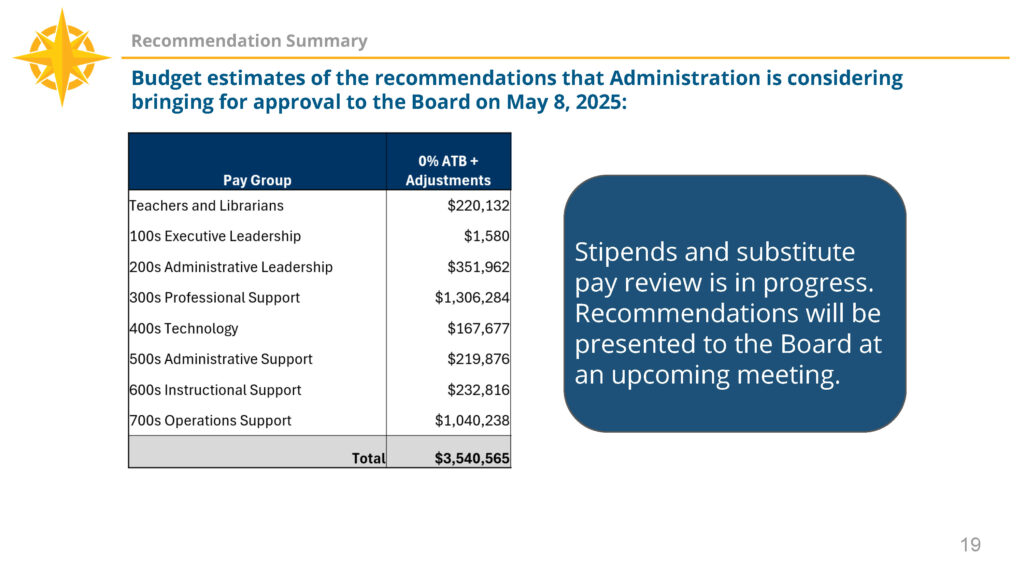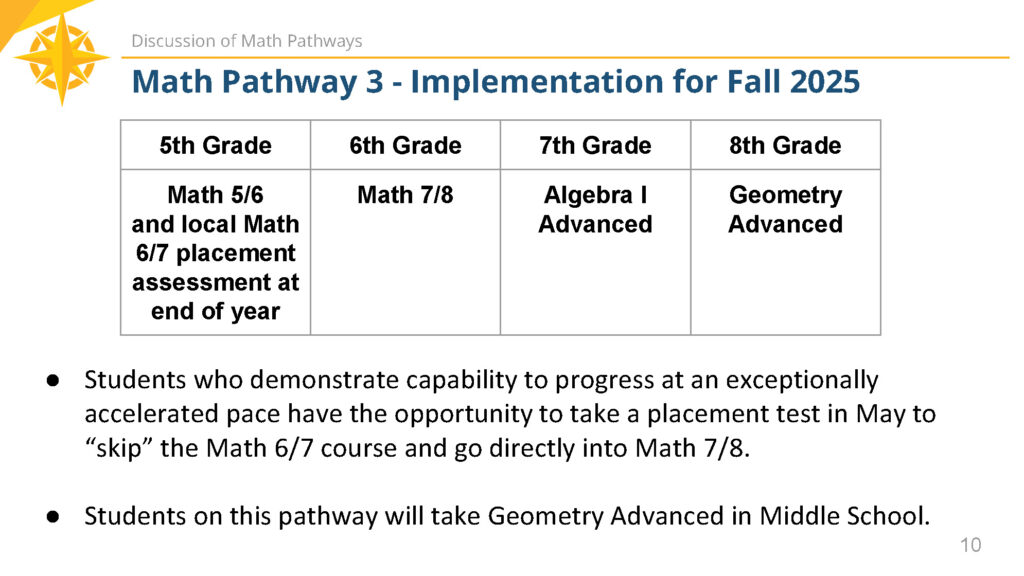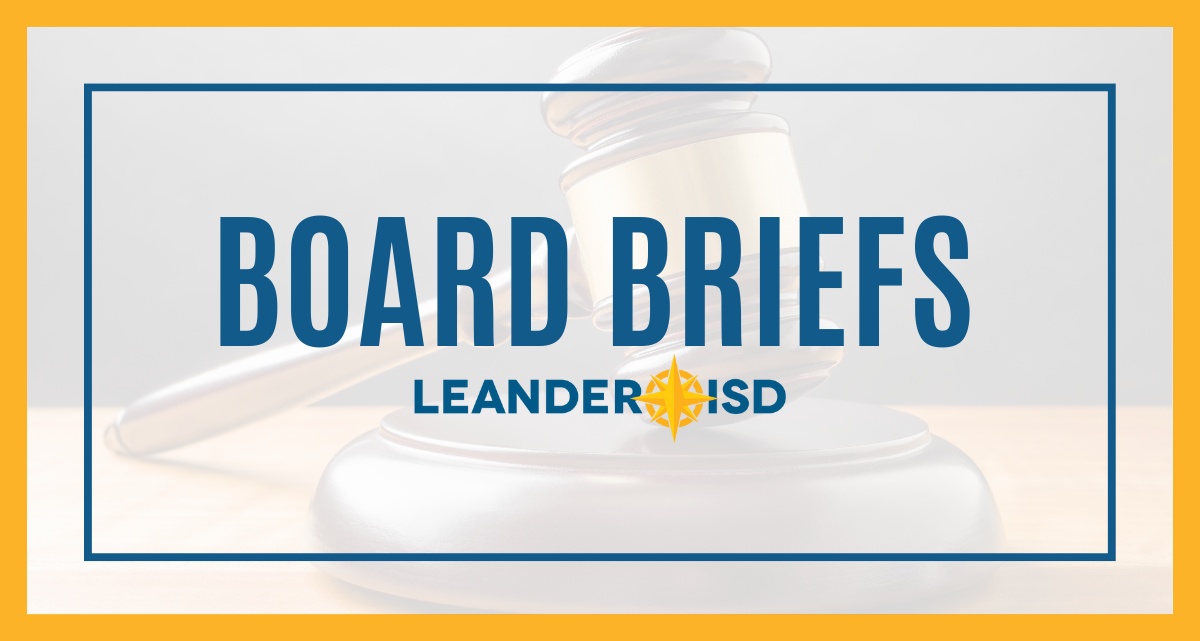During its April 24 meeting, the Board of Trustees agenda included:
- Spotlight on Learning: Camacho Elementary
- Board Recognitions
- Compensation Recommendations Aim to Balance Market Competitiveness, Stabilize Healthcare Costs with Expanded Access
- Pivotal School District-Related Bills Advance in Texas Legislative Session
- New Accelerated Opportunities Rolling Out for Math Next Year
- Hazardous Routes Adjustments Finalized for 2025–26 Following Yearly Evaluation
Spotlight on Learning: Camacho Elementary
Camacho Elementary brought energy and heart as they shared how their campus creates a safe, inclusive, and engaging space for students to learn and grow. Their team of students and staff spotlighted programs like Mission Control and the Shine Bright Coalition – fun, meaningful initiatives that help kids feel seen, supported and empowered. Through student-led activities, creative lessons, and a strong focus on emotional well-being, Camacho is building confident learners and compassionate leaders.
Way to go, Cosmos!
Board Recognitions
Special thanks to Vista Ridge High School students Riley and Alexis for helping celebrate stand-out individuals and accomplishments around #1LISD.
The Board recognized the following:
- UIL Soccer State Medalists
- Career and Technical Education (CTE) Achievement: JROTC
- Career and Technical Education (CTE) Achievement: Robotics
- Texas Color Guard Circuit (TCGC) Percussion Scholastic Open State Champions: Glenn High School
- Heller Awards for Young Artists
- Administrative Professionals Week, April 21-25
Compensation Recommendations Aim to Balance Market Competitiveness, Stabilize Healthcare Costs with Expanded Access

🎬 6.C.2. Discussion of 2025-26 Total Compensation Recommendations
Facing a challenging budget environment and a projected deficit for the upcoming year, Leander ISD continues to seek ways to support staff while remaining fiscally responsible. The 2025–26 compensation proposal builds on the district’s ongoing commitment to attracting and retaining highly skilled and talented staff.
A key component of the recommendation stems from the third-party pay systems review conducted by Texas Association of School Boards (TASB) throughout the fall and winter. This extensive analysis included market comparisons, input from district administrators, and a detailed review of salaries across similar districts. Recommendations from TASB included realigning pay structures by job family, expanding salary ranges, and ensuring pay midpoints align with regional market medians.
Although no across-the-board general pay increase is proposed under the current compensation plan like in previous years, the district would use the TASB recommendations to implement targeted adjustments for more than 2,900 employees – 51% of LISD staff – to address internal equity and market gaps, totaling approximately $3.5 million.
District leaders also addressed ongoing discussions at the state level, including legislation that could impact staff compensation. The district is preparing for possible changes in funding and has built flexibility into its compensation recommendations to adapt accordingly. The implementation of pay raises resulting from potential new legislation, such as House Bill 2, will require a close look at the impact to different employee groups to ensure all staff feel valued, as referenced by Gearing in his letter to legislators last week.
In addition to compensation, the presentation detailed the district’s evolving approach to employee benefits. In an ongoing effort, LISD has worked to stabilize healthcare costs while expanding access to care. The district remains self-funded, providing LISD with flexibility to tailor its benefits plans. Strategic partnerships, such as the addition of HealthCare Highways and the launch of the Frontier Direct Care clinic, have helped contain costs while improving access.
The district plans to bring these total compensation recommendations before the Board for approval at their May 8 meeting.
Previous Updates
- April 16, 2025: A Leap of Faith: A Message from our Superintendent to our Lawmakers
- March 27, 2025: Approval of Budget Deficit Parameter Adjustment for 2025-26
- March 13, 2025: Budget Discussion Leads to Modified Plan Forward Pending Parameter Adjustments by Board
- Feb. 13, 2025: Budget Development for 2025–26
- Feb. 7, 2025: A Message From LISD’s Board of Trustees Executive Officers
- Feb. 5, 2025: Important Update on Budget and Staffing for 2025-26
- Jan. 23, 2025: Budget Assumptions Approved for 2025–26 Fiscal Year
- Dec. 12, 2024: Preparations Underway for 2025–26 Budget
- Oct. 10, 2024: Budget Process for 2025–26 Starts with Identifying Priorities
Pivotal School District-Related Bills Advance in Texas Legislative Session

🎬 6.B.1. Legislative Committee Update
Superintendent Bruce Gearing, Ed.D., and Trustees on the LISD Legislative Committee provided an in-depth legislative update focused on the fast-moving bills impacting Texas public schools while also highlighting the district’s advocacy efforts around critical issues impacting public education.
Key legislative priorities discussed included special education, school safety, overall funding, vouchers and local control.
Leaders expressed cautious optimism about proposed increases in special education funding with a shift toward funding models based on individual student needs rather than instructional setting – changes that could better support students requiring intensive services.
While these changes would be appreciated, Gearing noted that gaps remain between what is funded and what school districts need. Members of the committee also raised concerns about proposed private school voucher programs, bond restrictions, and shifts in school finance policy that could significantly limit district flexibility and take away local control.
Committee members also praised the efforts of Board Vice President Anna Smith in shaping House Bill 1813, which would enhance transparency and parent access in special education processes. This bill, along with related provisions in other legislation, reflects the district’s commitment to advocacy and collaboration in support of every student.
With many proposals still in flux, district leaders stay committed to continued advocacy to ensure Leander ISD students and staff are well-supported. For additional information, visit the Legislative Priorities page, which includes a tracker of bills related to public education.
Previous Updates
- March 27, 2025: Update on the Texas 89th Legislative Session
- Feb. 13, 2025: Dynamic Student Speaker Shines During Legislative Committee Update
- Dec. 12, 2024: Engagement with Community Shapes Advocacy Priorities for 89th Legislative Session
New Accelerated Opportunities Rolling Out for Math Next Year

🎬 6.A.1. Discussion of Math Pathways
District administration provided the Board with an update on the implementation of its evolving Math Pathways system, aimed at ensuring all students have access to rigorous, developmentally appropriate math instruction from elementary through high school.
The district currently offers two established pathways, with a third launching in Fall 2025 for students ready for an exceptionally accelerated pace.
- Pathway 1 follows the traditional grade-level math sequence.
- Pathway 2 provides an accelerated track starting as early as fifth grade, allowing students to reach advanced math courses in high school.
- Pathway 3, which will be introduced for the 2025–26 school year, will allow qualifying students to move even faster by testing out of specific content, such as Math 6/7, and progressing to Geometry in middle school.
The update also addressed Senate Bill 2124, passed by the 88th Texas Legislature in 2023, which now requires districts to automatically place students into accelerated math if they score in the top 40% of their peers on the 5th grade STAAR test.
As the program expands, Leander ISD will collect data, adjust instruction, and continue building a system where all students are supported in achieving their full mathematical potential.
Previous Updates
- Feb. 13, 2025: Leading Measures Show Growth in Math, Reading
- Nov. 13, 2025: Math Pathways Webinar to Explore Accelerated Opportunities
- Sept. 5, 2024: Math Initiative Moves the Needle at Elementary Level
- Feb. 15, 2024: Mid-year Update on Reading & Math Initiatives
- May 11, 2023: New Initiative Aimed at Boosting Math Performance
Hazardous Routes Adjustments Finalized for 2025–26 Following Yearly Evaluation

🎬 5.A. CONSENT: Consider Approval of 2025-2026 Hazardous Routes
As part of the consent agenda, the Board approved the district recommendations for Hazardous Routes for 2025–2026.
The recommendations were made after the transportation department completed its yearly evaluation of bus routes, taking into account community feedback provided through a form available in December and January. All feedback was read, considered and evaluated.
Note: Areas not affected by current boundary changes, rezoning and construction were not evaluated due to no changes.
After reviewing all responses from the Hazardous Route Survey, the following adjustment conclusions to the current NETZones are as follows:
- Rouse High School (RHS) & Wiley Middle School (WMS):
NETZones will be reinstated, similar to previous years, but with an expanded coverage area due to newly constructed sidewalks and safe crossings. - Neighborhood Code 1310 to Pleasant Hill Elementary:
A portion of this area will be added to the NETZone, utilizing Hidden Trail as a safer route to avoid walking along Horizon Park.
State law requires school districts to provide bus service to students living more than 2 miles of their assigned schools. In Leander ISD, families living closer than 2 miles are in the “Not Eligible for Transportation Zone,” or NETZone. Students in the NETZone are only provided bus service if their route to school is rated as hazardous by a rating matrix. This rating instrument was developed by a community advisory committee and approved by the Board of Trustees to study hazardous route conditions.


